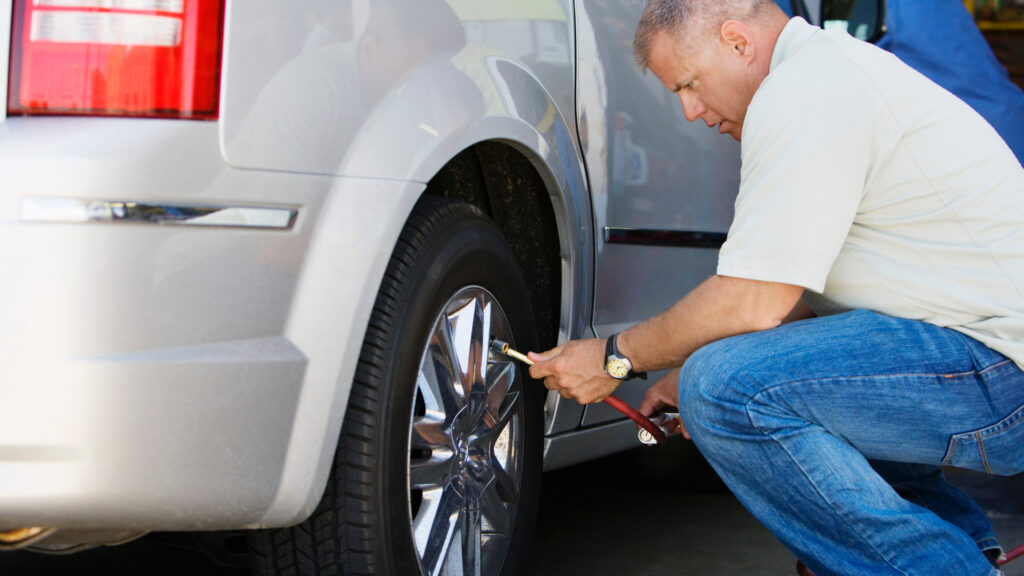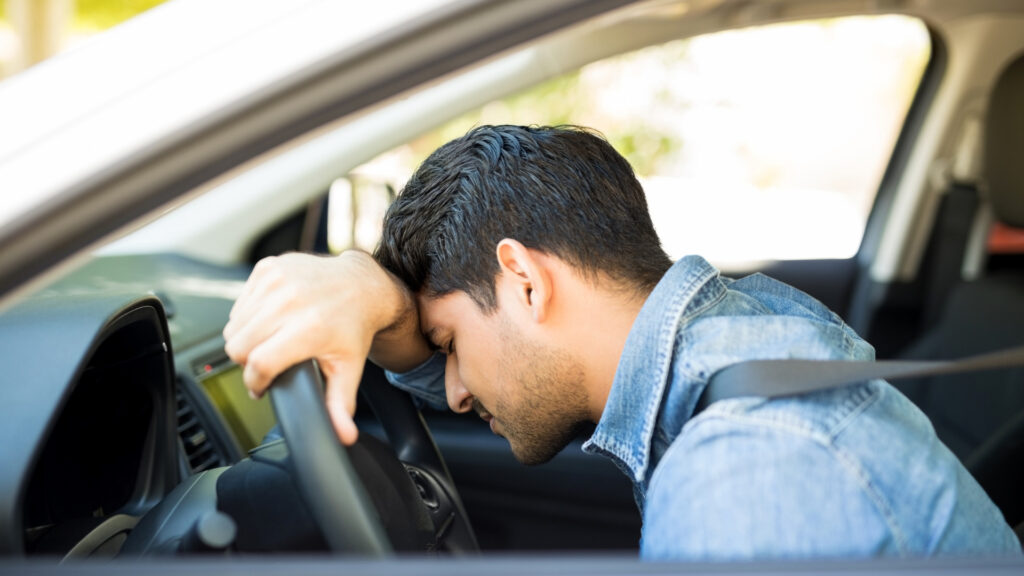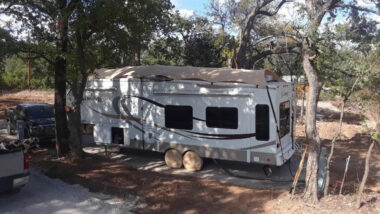Table of Contents Show
When a dump truck and RV collide, it won’t end well for either vehicle. Sadly, this is what happened in Quechee, Vermont, recently.
Every RVer wants to avoid this situation during their travels. However, the road can be dangerous, and you never know what could happen.
Today, we’ll look at this accident and share some insights to help keep you safe in the future.
Let’s get going!
RVers Experience Serious Accident
While traveling along Route 4 in eastern Vermont, a large Class A motorhome towing a Jeep and an empty dump truck ran into one another.
The dump truck was a Vermont Agency of Transportation vehicle that oversees the planning, construction, and maintenance of the state’s transportation system.
Unfortunately, officials have not disclosed the cause or who was at fault. However, pictures and video from local media appear to indicate a front collision on the driver’s sides of both vehicles. Either vehicle could have drifted across the line and caused the crash.
What’s the Aftermath of the Accident?
The accident shut down Route 4 for several hours while officials investigated and cleaned up the wreckage. Officials transported all three individuals involved in the accident to a local hospital.
While the RV occupants sustained minor injuries, the hospital listed the dump truck driver as being in serious condition. Unfortunately, we searched long and hard but found no additional information released by the Vermont Agency of Transportation or any news organization.
How Common are RV Crashes?
Because there are fewer of them on the road, RV crashes are far less common than passenger vehicle crashes.
However, Federal Motor Carrier Safety Administration experts reported in 2003 and 2012 that there were more than 70,000 RV accidents yearly. The same report indicated the fatality rate was a third of standard passenger vehicles.
Are RVs Safe in a Crash?
While RV crashes are rare, you must take safety seriously. It likely comes as no surprise that some RVs are safer than others. Class A motorhomes are big and bulky, which allows them to absorb a tremendous amount of the impact during a collision.
However, smaller Class B conversion vans are also often very safe. These vehicles undergo rigorous testing due to sitting on a standard vehicle chassis. Manufacturers must comply with the specific legal requirements that all passenger vehicles must follow.
Safety for towable RVs typically boils down to the tow vehicle. Since riding in a towable camper while traveling down the road is a terrible idea, occupant safety isn’t much of a concern for manufacturers.
Even during a minor accident, the cheap wood and paneling holding these rigs together will go flying. This is why you must invest in a quality tow vehicle to keep you safe.
How to Avoid Crashing Your RV
While you can’t prevent every accident, there are some things you can do to keep yourself and your passengers safe. Let’s look at how to avoid crashing your RV during your adventures.
Inspect and Maintain Your RV
The time leading up to getting behind the wheel and hitting the road can be exciting. However, this is a pivotal time when you can do some things to avoid a crash later. First, you should inspect your rig every time before setting out on a trip.
This is your last chance to catch tire and other critical equipment issues. Take your time with this, and make sure that you thoroughly inspect everything.
If you’re still getting familiar with how to do this, use our RV Departure Checklist to help you avoid skipping any critical steps.

Plan Your Route
Another vital step to avoid a potential crash is to plan your route. You want to avoid putting yourself and your RV in a dangerous situation. Ensure your RV can handle whatever hurdles are waiting ahead.
We use RV Life’s RV Trip Wizard when planning our route. This helps us avoid low clearances, weight restrictions, and roads that might not be ideal for us when traveling. It’s helped us plan trips all over the United States and Canada.
Drive Defensively
You can’t control how others behave while on the road. However, you can do all you can to be the best driver. An excellent defensive driver stays alert and is aware of what’s going on around them. Be ready for the unexpected, and keep your eyes on the road.
Defensive drivers don’t get distracted by cell phones or the infinite amount of buttons on the dashboard. Allow passengers to adjust radio stations and other non-essential items so you can focus on the road ahead.
Read More: Stay safe while driving with these defensive driving techniques.
Watch Your Speed
Many drivers forget they require substantially more stopping distance when driving or towing an RV. When it comes to stopping distance, every inch matters. It can mean the difference between avoiding that vehicle or obstacle and smashing into it.
We recommend that you always follow the speed limit. However, just because the interstate says 70 or 80 mph doesn’t mean you have to drive that fast.
It’s generally best for RVers to stay under 65 mph. This helps conserve fuel, reduce stopping distance, and protect tires from generating too much heat and failing.

Keep Your Distance
As we mentioned, every inch matters when it comes to stopping distance. While keeping two or three seconds between you and other vehicles may suffice for standard passenger vehicles, you’ll want to increase it in an RV. If you need to stop quickly, you’ll be happy that you did.
Unfortunately, other drivers may not recognize that the distance between you and the other vehicle is intentional. Be prepared for other drivers to fill in this space.
They may have plenty of time to stop, but you won’t. The last thing you want is to slam into the back of them.
Avoid Fatigue
Driving an RV requires your full attention and a tremendous amount of focus. Driving for several hours can be downright exhausting. Your eyes are constantly moving, and you have to be aware of the other vehicles around you. Fatigue can sneak up on you quickly and create a dangerous situation.
We encourage drivers to follow the RVing 2/2/2 rule. According to this unwritten rule, you stop every two hours, drive no more than 200 miles, and stay at least two days at each stop.
While it may not always be practical, it’s a good concept. You need to know your limits, and you want to make sure you’re not driving while tired.
Keep in Mind: Is It Safe to Sleep at Rest Stops? Click the link to find out!

Secure Loose Items
One of the most dangerous aspects of an RV is the loose items inside of it. You must put loose items away before hitting the road. If not, you’re going to be in for a surprise.
What do you think will happen when you slam on the brakes? Yep, you guessed it. They’re all going to come flying towards you at the front of the RV.
Loose items can be hazardous and cause significant damage. Unless you enjoy replacing and repairing things, this will be a lesson you learn the first time. Make securing loose items a part of the pre-trip checklist we mentioned earlier.
Learn from the RV and Dump Truck Collision
We’re sending our best out to those involved in the RV and dump truck collision. However, we can all learn something from the situation. You must take all of the proper precautions when traveling in an RV.
You never know when a disaster is going to hit. When it does, you want to ensure you and your fellow passengers are safe.
Have you ever been involved in an RV crash?






